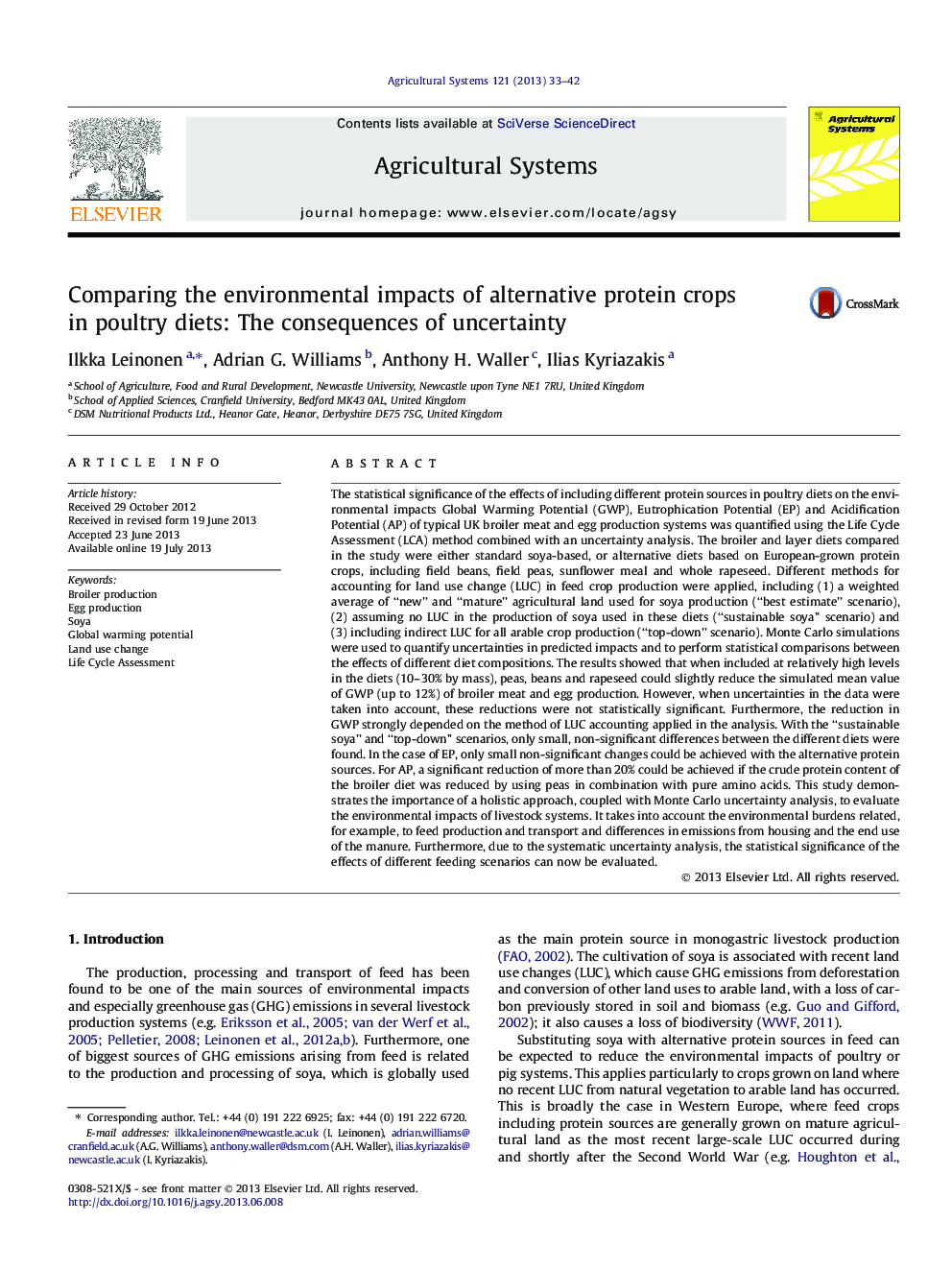| کد مقاله | کد نشریه | سال انتشار | مقاله انگلیسی | نسخه تمام متن |
|---|---|---|---|---|
| 4491305 | 1623249 | 2013 | 10 صفحه PDF | دانلود رایگان |

• Environmental impacts of poultry production with different diets were modelled.
• European protein sources in diets slightly reduced global warming potential.
• Different methods for including land use change in soya production were evaluated.
• The effect on global warming potential strongly depends on the method applied.
The statistical significance of the effects of including different protein sources in poultry diets on the environmental impacts Global Warming Potential (GWP), Eutrophication Potential (EP) and Acidification Potential (AP) of typical UK broiler meat and egg production systems was quantified using the Life Cycle Assessment (LCA) method combined with an uncertainty analysis. The broiler and layer diets compared in the study were either standard soya-based, or alternative diets based on European-grown protein crops, including field beans, field peas, sunflower meal and whole rapeseed. Different methods for accounting for land use change (LUC) in feed crop production were applied, including (1) a weighted average of “new” and “mature” agricultural land used for soya production (“best estimate” scenario), (2) assuming no LUC in the production of soya used in these diets (“sustainable soya” scenario) and (3) including indirect LUC for all arable crop production (“top-down” scenario). Monte Carlo simulations were used to quantify uncertainties in predicted impacts and to perform statistical comparisons between the effects of different diet compositions. The results showed that when included at relatively high levels in the diets (10–30% by mass), peas, beans and rapeseed could slightly reduce the simulated mean value of GWP (up to 12%) of broiler meat and egg production. However, when uncertainties in the data were taken into account, these reductions were not statistically significant. Furthermore, the reduction in GWP strongly depended on the method of LUC accounting applied in the analysis. With the “sustainable soya” and “top-down” scenarios, only small, non-significant differences between the different diets were found. In the case of EP, only small non-significant changes could be achieved with the alternative protein sources. For AP, a significant reduction of more than 20% could be achieved if the crude protein content of the broiler diet was reduced by using peas in combination with pure amino acids. This study demonstrates the importance of a holistic approach, coupled with Monte Carlo uncertainty analysis, to evaluate the environmental impacts of livestock systems. It takes into account the environmental burdens related, for example, to feed production and transport and differences in emissions from housing and the end use of the manure. Furthermore, due to the systematic uncertainty analysis, the statistical significance of the effects of different feeding scenarios can now be evaluated.
Journal: Agricultural Systems - Volume 121, October 2013, Pages 33–42